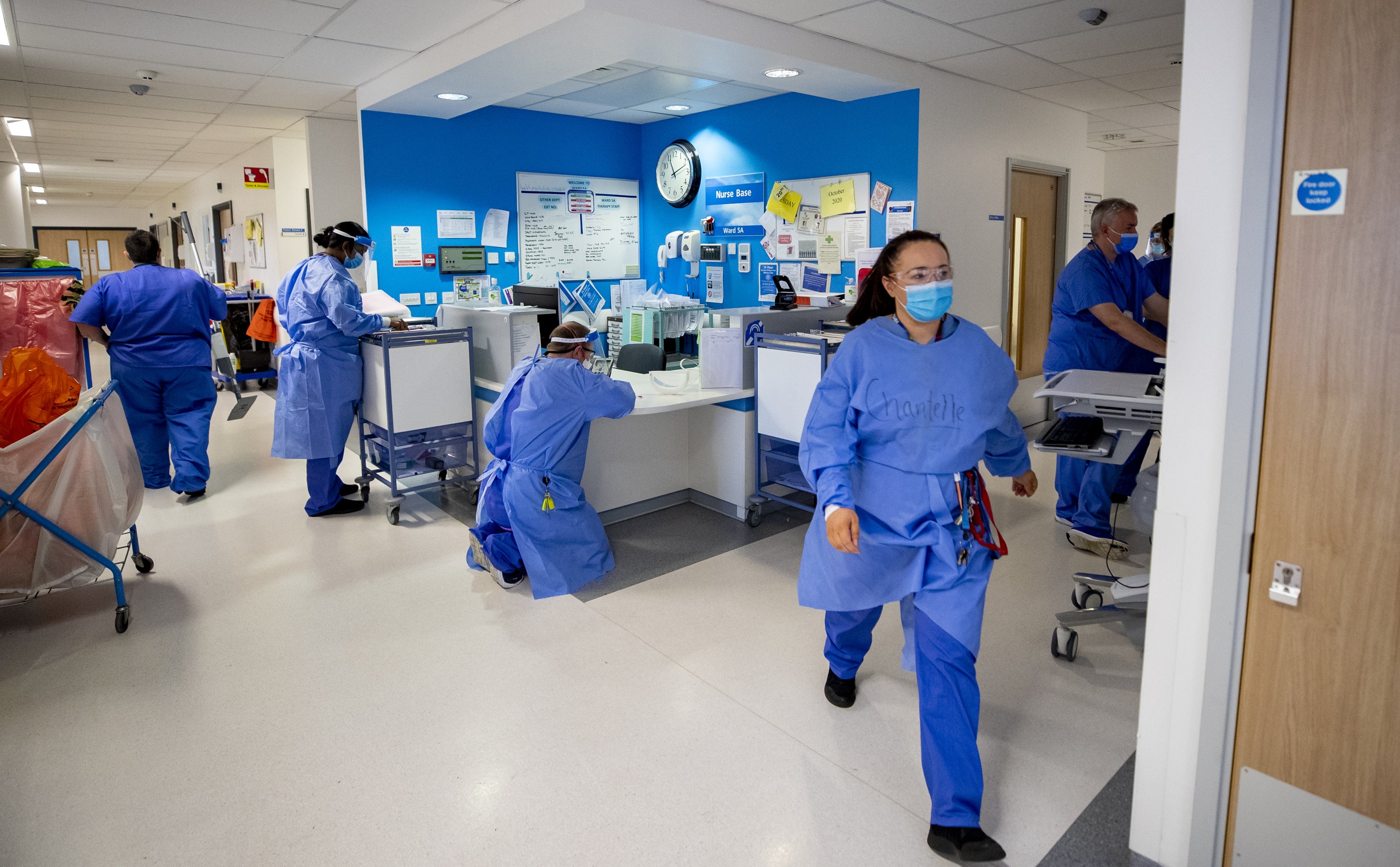What do the latest NHS performance figures show?
Ambulance response times and A&E waits are the worst on record.

Your support helps us to tell the story
From reproductive rights to climate change to Big Tech, The Independent is on the ground when the story is developing. Whether it's investigating the financials of Elon Musk's pro-Trump PAC or producing our latest documentary, 'The A Word', which shines a light on the American women fighting for reproductive rights, we know how important it is to parse out the facts from the messaging.
At such a critical moment in US history, we need reporters on the ground. Your donation allows us to keep sending journalists to speak to both sides of the story.
The Independent is trusted by Americans across the entire political spectrum. And unlike many other quality news outlets, we choose not to lock Americans out of our reporting and analysis with paywalls. We believe quality journalism should be available to everyone, paid for by those who can afford it.
Your support makes all the difference.Here are the key figures from the latest data on the performance of the NHS in England:
– Overall waiting list
The number of people in England waiting to start routine hospital treatment has risen to a new record high.
A total of 6.2 million people were waiting to start treatment at the end of February 2022, according to NHS England figures. This is up from 6.1 million in January and is the highest number since records began in August 2007.
– Waits of more than two years
There were 23,281 people waiting more than two years to start treatment at the end of February.
This is down slightly from 23,778 at the end of January but is around nine times the 2,608 people who were waiting longer than two years in April 2021.
The Government and NHS England have set the ambition to eliminate all waits of more than two years, except when it is the patient’s choice, by July 2022.
– Waits of more than a year
The number of people having to wait more than 52 weeks to start hospital treatment in England was 299,478 in February, down from 311,528 the previous month.
The Government and NHS England have set the ambition of eliminating all waits of more than a year by March 2025.
– Hospital admissions
The number of people admitted for routine treatment in hospitals in England in February was 247,802 – up 62% from a year earlier (152,642), although this reflects lower-than-usual figures for February 2021, which were affected by the Covid-19 pandemic.
The equivalent figure for February 2020, before the pandemic began, was 284,715.
– A&E waits
A record 22,506 people had to wait more than 12 hours in A&E departments in England in March from a decision to admit to actually being admitted.
The figure is up from 16,404 in February and is the highest for any calendar month in records going back to August 2010.
A total of 136,297 people waited at least four hours from the decision to admit to admission in March, another all-time high.
Meanwhile just 71.6% of patients in England were seen within four hours at A&Es last month, the lowest percentage in records going back to November 2010.
The operational standard is at least 95% of patients attending A&E should be admitted, transferred or discharged within four hours, but this has not been met nationally since 2015.
– Ambulance response times
The average response time last month for ambulances in England dealing with the most urgent incidents – defined as calls from people with life-threatening illnesses or injuries – was nine minutes and 35 seconds.
This is up from eight minutes and 51 seconds in February and is the longest average response time since current records began in August 2017.
Ambulances took an average of one hour, one minute and three seconds last month to respond to emergency calls, such as burns, epilepsy and strokes.
This is up from 42 minutes and seven seconds in February and is the longest time on record for this category of call-outs.
Response times for urgent calls – such as late stages of labour, non-severe burns and diabetes – averaged three hours, 28 minutes and 13 seconds.
This is up from two hours, 16 minutes and 13 seconds in February and is again a record.
– Cancer referrals
Some 220,037 urgent cancer referrals were made by GPs in England in February, up 26% from 174,762 in the same month last year.
The equivalent figure for February 2020 was 190,369.
The proportion of patients in England seeing a specialist within two weeks was 81%, up from 75% in January, which was the lowest percentage in records going back to October 2009.
Some 74% of patients urgently referred for suspected cancer in England in February were diagnosed or had cancer ruled out within 28 days.
Data on this metric only goes back to April 2021 so there are no comparable figures for February 2021.
The elective recovery plan sets a goal of 75% of patients who have been urgently referred by their GP for suspected cancer to be diagnosed or have cancer ruled out within 28 days by March 2024.
– Diagnostic tests
More than 360,000 people in England were waiting over six weeks for a key diagnostic test in February.
Some 362,068 patients – 24% of the total – were waiting longer than six weeks for one of 15 standard tests, including an MRI scan, non-obstetric ultrasound or gastroscopy.
The equivalent number in February 2021 was 327,663 while in February 2020 there were 29,945.
The elective recovery plan sets the ambition that 95% of patients needing a diagnostic test receive it within six weeks by March 2025.